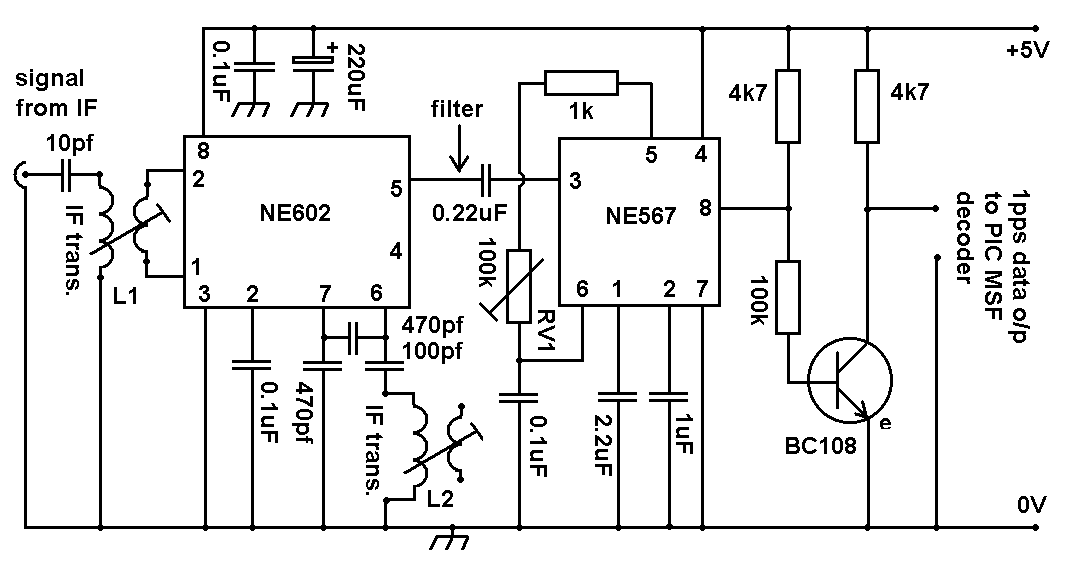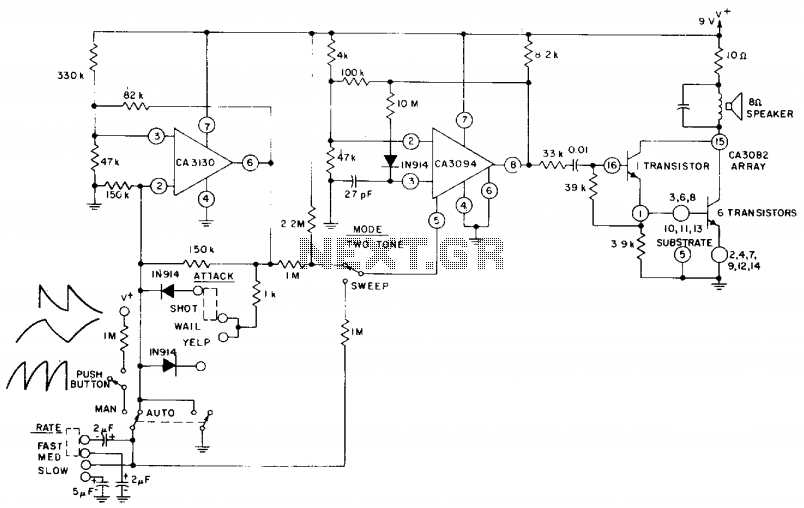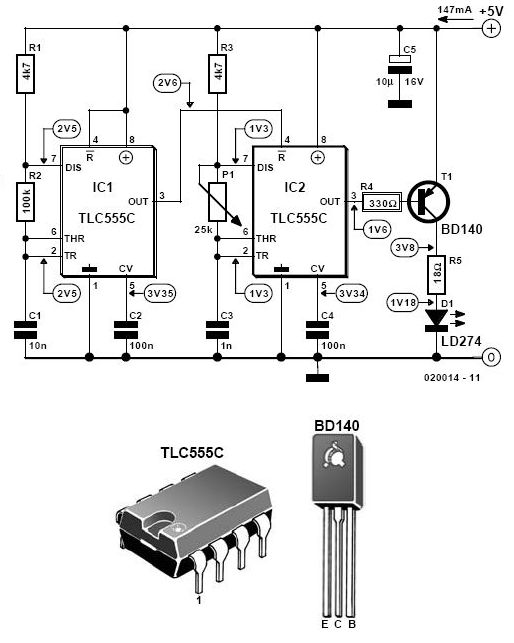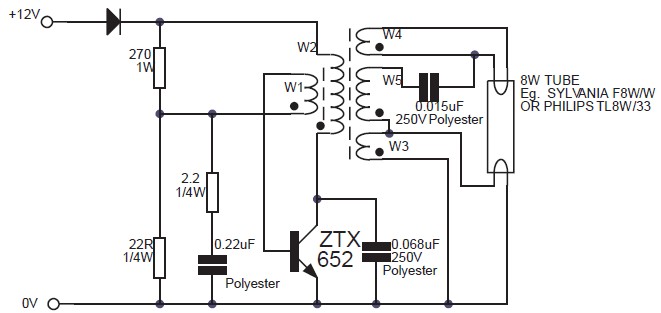
Explosive gas detector circuit diagram
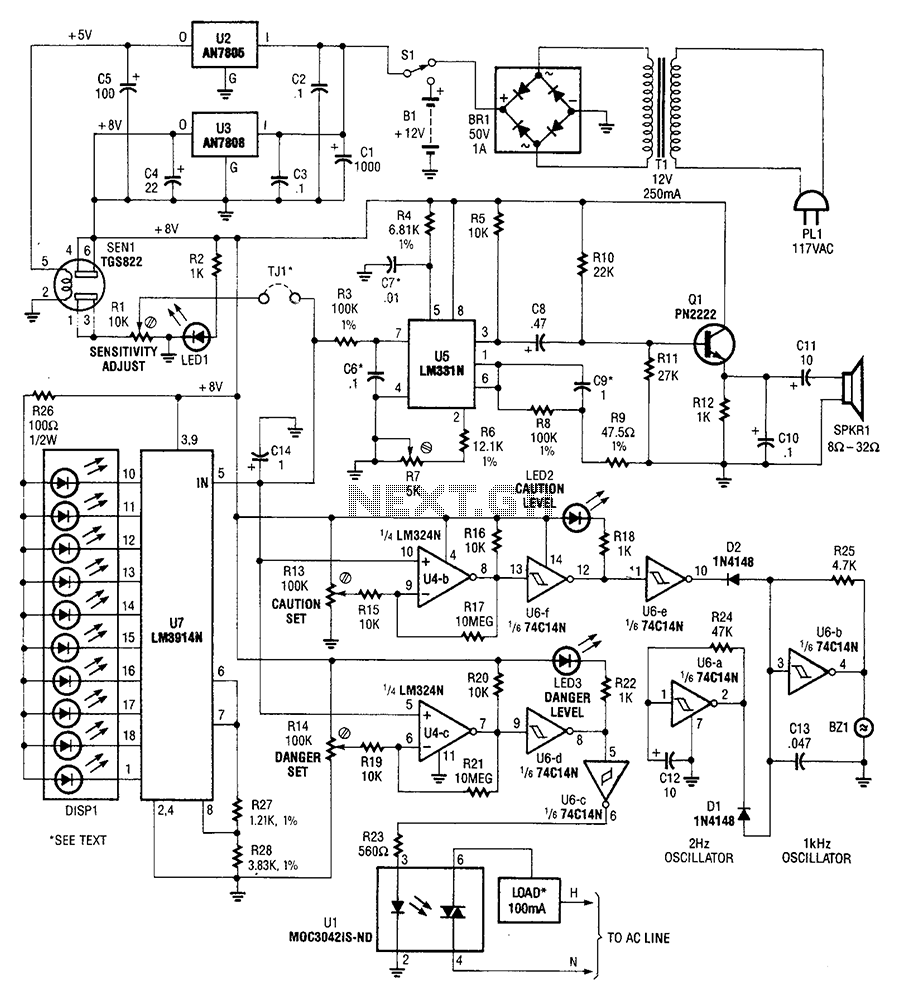
A gas sensor (from Allegro Electronics, Cornwall Bridge, CT06754 Ts GS823) activates in the presence of explosive gas. U5 functions as a voltage-to-frequency converter, with the sensor producing a frequency that is proportional to conductance. The output frequency varies from clean air to 100 Hz in a polluted atmosphere, reaching up to 8 kHz.
The gas sensor operates by detecting the presence of specific explosive gases in the environment. When exposed to these gases, the sensor generates a signal that is converted into a frequency output by the voltage-to-frequency converter (U5). This conversion allows for a direct correlation between the gas concentration and the output frequency, facilitating easier monitoring and analysis of gas levels.
In clean air conditions, the sensor outputs a lower frequency, indicating a minimal presence of gases. As the concentration of explosive gases increases, the output frequency rises, reaching a maximum of 8 kHz in heavily polluted environments. This frequency range provides a clear indication of the gas concentration, allowing for effective detection and alerting mechanisms to be implemented in safety systems.
The design of the circuit typically includes components such as resistors and capacitors to filter and stabilize the output signal, ensuring accurate frequency readings. Additionally, the circuit may incorporate microcontroller interfaces for further processing and integration with alarm systems or data logging equipment. This comprehensive approach allows for real-time monitoring and enhances safety measures in environments where explosive gases may pose a risk.A gas sensor (from Allegro electronics, Cornwall Bridge, CT06754 Ts GS823) in the presence of explosive gas turned on. U5 is a voltage to frequency converter, and a sensor whic h produces a frequency proportional to conductance. The output frequency ranges from clean air to 100Hz in the polluted atmosphere of 8kHz.
The gas sensor operates by detecting the presence of specific explosive gases in the environment. When exposed to these gases, the sensor generates a signal that is converted into a frequency output by the voltage-to-frequency converter (U5). This conversion allows for a direct correlation between the gas concentration and the output frequency, facilitating easier monitoring and analysis of gas levels.
In clean air conditions, the sensor outputs a lower frequency, indicating a minimal presence of gases. As the concentration of explosive gases increases, the output frequency rises, reaching a maximum of 8 kHz in heavily polluted environments. This frequency range provides a clear indication of the gas concentration, allowing for effective detection and alerting mechanisms to be implemented in safety systems.
The design of the circuit typically includes components such as resistors and capacitors to filter and stabilize the output signal, ensuring accurate frequency readings. Additionally, the circuit may incorporate microcontroller interfaces for further processing and integration with alarm systems or data logging equipment. This comprehensive approach allows for real-time monitoring and enhances safety measures in environments where explosive gases may pose a risk.A gas sensor (from Allegro electronics, Cornwall Bridge, CT06754 Ts GS823) in the presence of explosive gas turned on. U5 is a voltage to frequency converter, and a sensor whic h produces a frequency proportional to conductance. The output frequency ranges from clean air to 100Hz in the polluted atmosphere of 8kHz.

